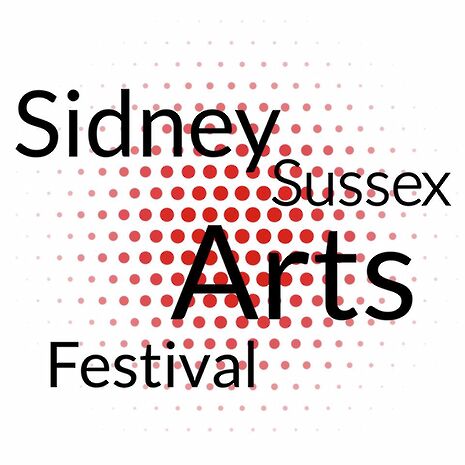Sidney Sussex Arts Festival
A marvellous day of arts and culture to top off May Week, says Samuel Hewitt

The Sidney Sussex Arts Festival began in 2009, but this was the first year that they accepted works from across the entire university. As such, there was an extraordinary range of performances and exhibitions on offer, and barring the use of a time-turner I was inevitably going to be limited to a small fraction. So, given everyone's cruel insistence that "magic isn't real you idiot", what follows is an account of everything I managed to fit into my decidedly linear schedule, and any complaints regarding certain omissions should be directed towards Will Searle for having the nerve to give me a choice in the first place.
The Festival kicked off with a concert on the Main Stage, featuring a specially assembled orchestra and chorus. The first piece was a Festival Fanfare, a commissioned piece from Owain Park, which managed to encapsulate the theme of the Festival (‘Motion’) with a restless underlying rhythm driving the music throughout. Then the chorus came on stage, first performing Praetorius’ Oculi Omnium and then joining with the orchestra to finish with Alexander Borodin’s Polovtsian Dances. The concert was occasionally a little rough around the edges, and the hangovers plaguing some of the chorus members came to light in the more exposed parts of the Dances, but overall it came together well under Charlotte Rowan’s direction.
After a brief trip to pick up an umbrella (I hadn’t noticed the hundreds of free ones they had started handing out), I caught a bit of the Contemporary Dance back on the main stage before heading off to view some of the Visual Arts exhibitions in the college. The Sidney Sussex Choir formed a nice backdrop as I wandered around the various works on display in the Old Library, where I was particularly taken by Emma Veares’ use of silk prints to create the illusion of moving light. I then moved out into Cloister Court, where there were some more expansive pieces on offer, like Charlie Clark’s curious visualisation of a daily routine. Then I went back to the Main Stage to avoid anyone realising that I don’t really know what I’m talking about.
After a surprising performance by the Steel Pans Society, I went into the Chapel to witness the A Cappella Competition, which managed to have all the excitement of Pitch Perfect without the appalling screenplay and melodramatic plot. Unfortunately not having time to stick around for the verdict, I left to catch Blood Wedding in the Hall. The acoustics were rather unforgiving, and the staging meant that sightlines were occasionally obscured, but this difficult play came together admirably under the direction of Eloïse Poulton, with solid acting throughout and a particularly impressive performance by Posey Mehta as the Bridegroom’s Mother.
Next up was the headline, with Jake Spence interviewing Stephen Fry back on the Main Stage. Jake handled the interview well, but his considerable charisma served as little more than occasional respite from Stephen’s incredible ability to hold the audience’s interest. I thought it appropriate that he spoke at length about Oscar Wilde: they both share the ability to weave beautiful sentences together without necessarily saying anything particularly profound. When Stephen proclaimed that he is “not an artist, but an entertainer”, I was inclined to agree, but that doesn’t in any way diminish just how fantastic an entertainer he is.
I was slightly surprised to see Cadenza alight the stage next as the winners of the A Cappella Competition, as I had thought that Fitz Barbershop would have just edged them out, but any doubts were soon erased by their subsequent performance; clearly they saved their best for this. Then came a performance of Britten’s “The Turn of The Screw”, which for me was the highlight of the festival; Jonny Venvell did wonders with the simple staging, Benedict Collins-Rice conducted the extremely talented orchestra masterfully, and every single performer on stage managed to utterly enthrall the audience with some wonderfully expressive singing. Then I wound down from that high strung performance with The Green Street Band, whose performance of “Thrift Shop” in particular was excessively entertaining, and who managed to hold their own against the renowned Groove Knights, who saw off the event in style. All in all, it was a fantastic event, and my only regret is that there was so much on that I couldn’t help but miss most of it. I highly recommend it to anyone who, two years from now, feels the need to atone for the debauchery of May Week with some much needed culture. Plus, if it all gets too much, there’s always the bar.
 Features / Should I stay or should I go? Cambridge students and alumni reflect on how their memories stay with them15 December 2025
Features / Should I stay or should I go? Cambridge students and alumni reflect on how their memories stay with them15 December 2025 News / Cambridge study finds students learn better with notes than AI13 December 2025
News / Cambridge study finds students learn better with notes than AI13 December 2025 News / Dons warn PM about Vet School closure16 December 2025
News / Dons warn PM about Vet School closure16 December 2025 Comment / The magic of an eight-week term15 December 2025
Comment / The magic of an eight-week term15 December 2025 News / News In Brief: Michaelmas marriages, monogamous mammals, and messaging manipulation15 December 2025
News / News In Brief: Michaelmas marriages, monogamous mammals, and messaging manipulation15 December 2025








